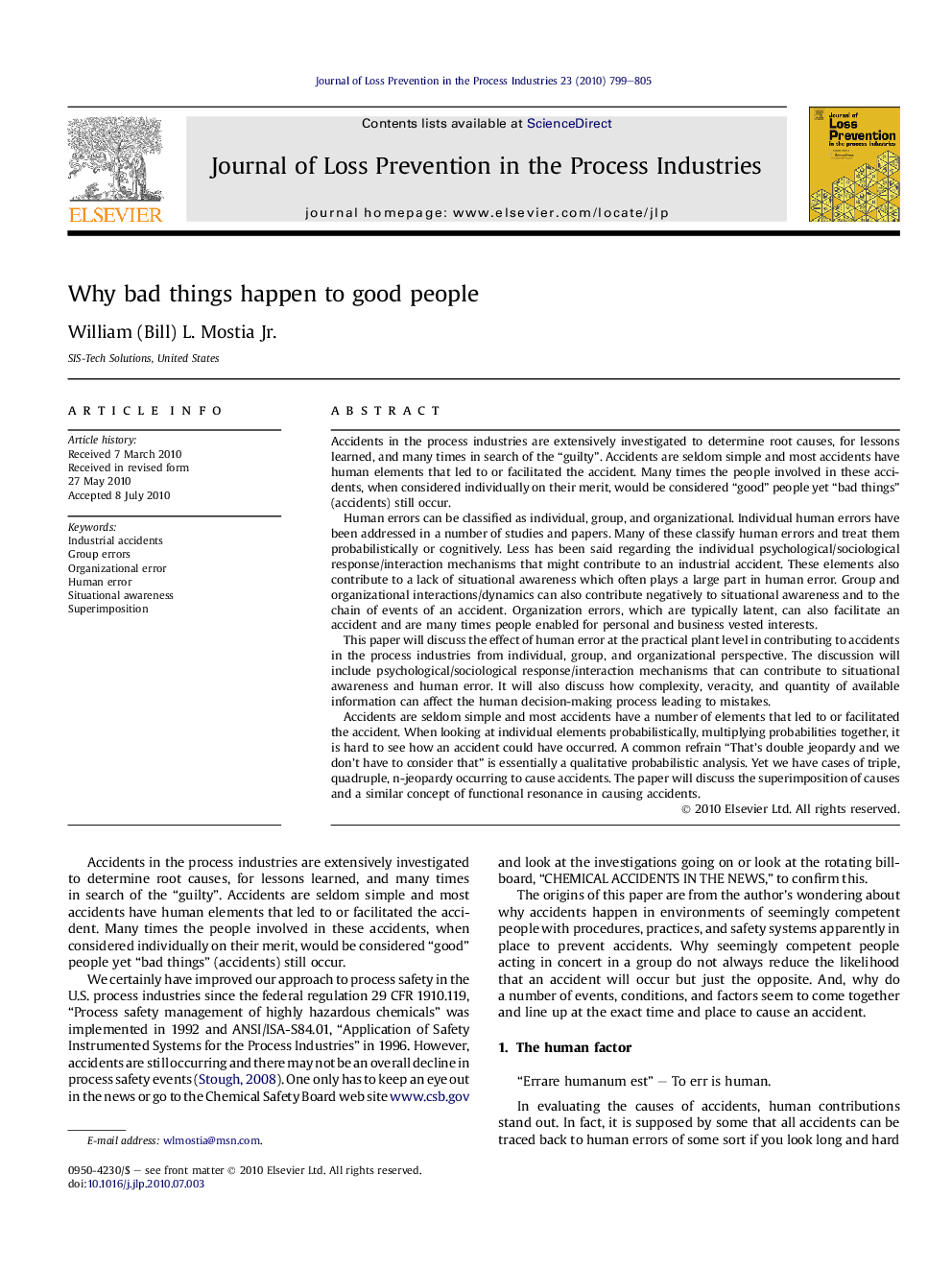| کد مقاله | کد نشریه | سال انتشار | مقاله انگلیسی | نسخه تمام متن |
|---|---|---|---|---|
| 587098 | 878254 | 2010 | 7 صفحه PDF | دانلود رایگان |

Accidents in the process industries are extensively investigated to determine root causes, for lessons learned, and many times in search of the “guilty”. Accidents are seldom simple and most accidents have human elements that led to or facilitated the accident. Many times the people involved in these accidents, when considered individually on their merit, would be considered “good” people yet “bad things” (accidents) still occur.Human errors can be classified as individual, group, and organizational. Individual human errors have been addressed in a number of studies and papers. Many of these classify human errors and treat them probabilistically or cognitively. Less has been said regarding the individual psychological/sociological response/interaction mechanisms that might contribute to an industrial accident. These elements also contribute to a lack of situational awareness which often plays a large part in human error. Group and organizational interactions/dynamics can also contribute negatively to situational awareness and to the chain of events of an accident. Organization errors, which are typically latent, can also facilitate an accident and are many times people enabled for personal and business vested interests.This paper will discuss the effect of human error at the practical plant level in contributing to accidents in the process industries from individual, group, and organizational perspective. The discussion will include psychological/sociological response/interaction mechanisms that can contribute to situational awareness and human error. It will also discuss how complexity, veracity, and quantity of available information can affect the human decision-making process leading to mistakes.Accidents are seldom simple and most accidents have a number of elements that led to or facilitated the accident. When looking at individual elements probabilistically, multiplying probabilities together, it is hard to see how an accident could have occurred. A common refrain “That’s double jeopardy and we don’t have to consider that” is essentially a qualitative probabilistic analysis. Yet we have cases of triple, quadruple, n-jeopardy occurring to cause accidents. The paper will discuss the superimposition of causes and a similar concept of functional resonance in causing accidents.
Journal: Journal of Loss Prevention in the Process Industries - Volume 23, Issue 6, November 2010, Pages 799–805